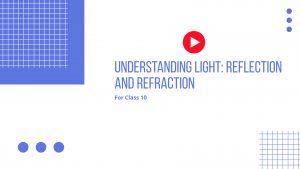NCERT Solutions for Social History Class 10 Chapter 2
NCERT Solutions for Class 10
Social Science (History)
Chapter 2 – Nationalism in India
Question 1: Explain-
(a) Why Growth of Nationalism in the Colonies is Linked to An Anti-Colonial Movement.
• Ans: People’s freedom was undermined by colonization, and nationalist emotions grew stronger as a result of the struggle against imperial dominance.
• People from all walks of life banded together in their feelings of oppression and exploitation, resulting in the rise of nationalist beliefs.
• As a result, anti-colonial movements are related to the rise of nationalism in the colonies.
(b) How The First World War Helped in The Growth of The National Movement in India.
Answer:
• During World War I, the British army used coerced recruitment in India’s rural districts.
• High customs tariffs and income taxes were levied to fund the defense budget. In addition, crops failed in several parts of India between 1918 and 1920, resulting in severe food shortages.
• All of this sparked widespread outrage and hostility to British colonial rule, propelling India’s national movement on a new, more determined path.
(c) Why Indians Were Outraged by The Rowlatt Act.
Answer:
• The Rowlatt Act allowed for the trial of some political crimes without juries and the imprisonment of suspects without charge.
• Despite opposition from Indian members, the Rowlatt Act was rushed through the Imperial Legislative Council.
• It provided the government with authoritarian powers to suppress political activities, as well as the ability to hold political detainees for two years without charge or trial.
• This conduct offended Indians because it was undemocratic and harsh, and it harmed national sentiments and dignity.
(d) Why Gandhiji Decided to Withdraw From the Non-Cooperation Movement.
Answer: Due to many incidents of public violence, Gandhiji decided to discontinue the Non-Cooperation Movement, particularly the Chauri Chaura event in 1922, in which people clashed with the police and set a police station on fire. Gandhiji believed that the people were not yet prepared for a widespread uprising and that satyagrahis needed to be properly taught in nonviolent protests.
Question 2: What is Meant by The Idea of Satyagraha?
Answer:
• Satyagraha’s literal definition is “truth” and “insistence” or “holding firmly to,” which means “holding strongly to the truth.”
• Satyagraha is a type of civil resistance that is peaceful. Satyagraha was a new way of agitating the masses.
• The concept of Satyagraha emphasizes the importance of truth and the necessity to seek it out.
• It implied that if the cause was just and the struggle was for justice, then fighting the oppressor did not require physical force.
• It meant that resisting the oppressor did not involve physical force if the cause was just and the struggle was for justice.
Question 3: Write a Newspaper Report on:
(a) The Jallianwala Bagh Massacre
Answer: On April 13, 1919, a large throng assembled in Jallianwala Bagh’s walled grounds, some to protest the British government’s harsh tactics, and others to attend the annual Baisakhi Fair. Marshal Law had been established in the city, but these residents were unaware of it. General Dyer, the commander, barred the evacuation points from Bagh and began fire on the inhabitants. Dyer’s purpose was to terrorise satyagrahis to have a “moral effect.” Hundreds of innocent citizens were killed or injured as a result of the British soldiers’ indiscriminate firing, which provoked national outrage. The Jallianwala Bagh tragedy was the bloodiest in Indian history.
(b) The Simon Commission
Answer: The British government set up a commission to look at the Government of India Act of 1919. The commission aimed to look at how the act worked and provide recommendations for further reforms to the administrative system. As a result, the commission was given a name after Sir John Simon, its chairman. Indian nationalists, on the other hand, were opposed to the Commission because it did not include a single Indian member. As a result, when the Simon Commission arrived in India in 1928, they were greeted with the slogan “Go Back.” The debate was attended by representatives from all parties, including the Congress and the Muslim League.
Question 4: Compare the Images of Bharat Mata in This Chapter With the Image of Germania in Chapter 1.
Answer: The picture of Germania was the German nation’s symbol, whereas the image of Bharat Mata was the Indian nation’s symbol.
• Both images motivated nationalists to fight tirelessly to unite their countries and achieve a liberal society.
• Bharat Mata’s image differs from Germania’s in that the former depicts the religious foundation upon which it was built.
• Abanindranath Tagore’s painting of Bharat Mata is endowed with learning, food, clothing, and certain ascetic qualities. Another artwork of Bharat Mata has her clutching Trishul and standing with a lion and an elephant, both of which are symbols of power and authority. This image appears to be more close to Germania’s image, which shows her wielding a sword and shield.
Discuss
Question 1: List All The Different Social Groups Which Joined The Non-Cooperation Movement of 1921. Then Choose Any Three and Write About Their Hopes and Struggles to Show Why They Joined The Movement.
Answer: The urban middle class, which included lawyers, teachers, and headmasters, as well as students, peasants, tribals, and laborers, all joined the Non-Cooperation Movement of 1921.
• The middle class joined the movement in the hopes of increasing sales of indigenous textiles and handlooms by boycotting foreign goods.
• Peasants joined the movement to be free of harsh landlords and the colonial government’s high taxes.
• Plantation workers joined the agitation in the hopes of gaining the freedom to roam freely within and outside of the plantations, as well as land in their villages.
Question 2: Discuss the Salt March to Make Clear Why it Was an Effective Symbol of Resistance Against Colonialism.
Answer: The Salt March was a powerful symbol of anti-colonial resistance because it was organized in opposition to a commodity—salt—that was used by both the rich and the poor. The salt tax, as well as the government’s monopoly on its production, was a repressive administrative measure. The Salt March was also successful because Gandhiji met a huge number of commoners and taught them the true meaning of swaraj and nonviolence while on the march. By calmly disobeying the law and producing salt despite government orders, Gandhiji set an example for the entire nation of how to oppose oppressors without resorting to violence. The Civil Disobedience Movement arose as a result of this in 1930.
Question 3: Imagine You Are a Woman Participating in The Civil Disobedience Movement. Explain What The Experience Means to Your Life.
Answer: It was a time when women were confined to their homes. A woman’s role was regarded to be that of a housewife. Even though I had a solid education, I was not allowed to participate in social or political events. However, I felt that by participating in the Civil Disobedience Movement, I could contribute to the nation-building process. So, when Gandhiji called, I couldn’t say no. And, in defiance of my family’s values, I became an active member of the revolution. Participating in Gandhi’s Civil Disobedience Movement transformed me and changed my perspective about myself and my role in society. I felt more connected to my nation, and all the people around me and saw myself as a patriot, not just a woman bound to her house. The campaign drew a sizable number of women. They took part in protest marches, made salt, and raided foreign apparel and booze businesses. Many of them have been arrested and imprisoned by the police. It was a motivating experience for me to tend to those injured in the lathi-charge. For me, national duty became more than a moral obligation, it became a significant part of my identity.
Question 4: Why did political leaders differ sharply over the question of separate electorates?
Answer: Because of differences in opinion, political leaders clashed vehemently on the issue of different electorates. While some supporters of minorities and Dalits believed that only political empowerment could help them overcome their social disadvantages, others, including Gandhiji, feared that separate electorates would stifle their absorption into society. Furthermore, it was anticipated that the system of distinct electorates would gradually fracture the country, as each community or class would want separate representation.
Study materials
- Refernce Books
- NCERT Solutions
- Syllabus







